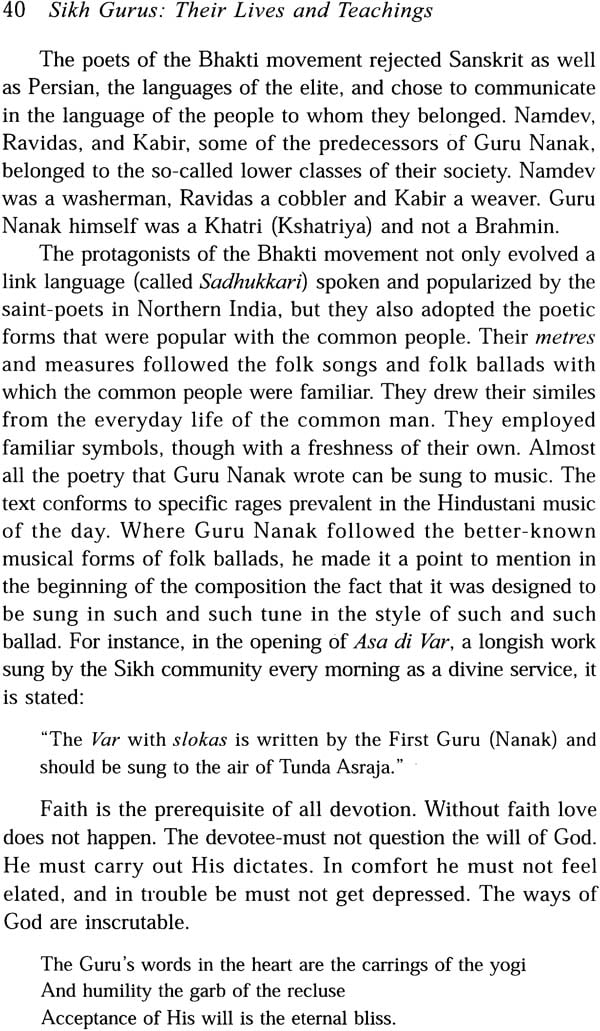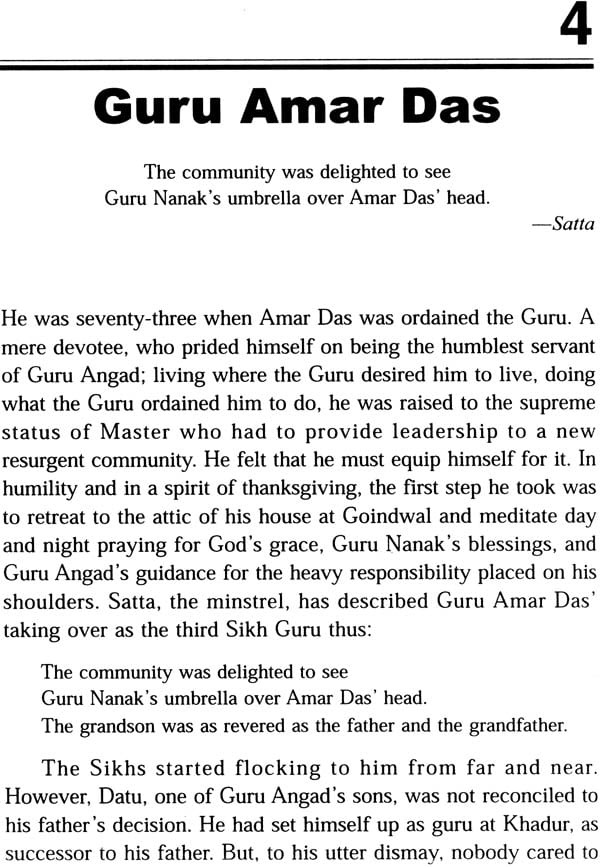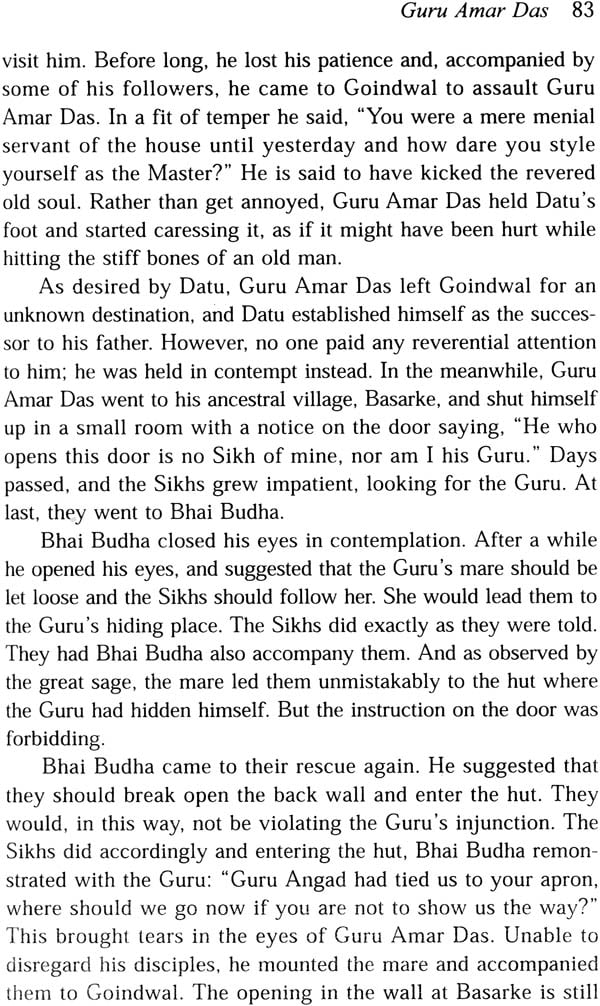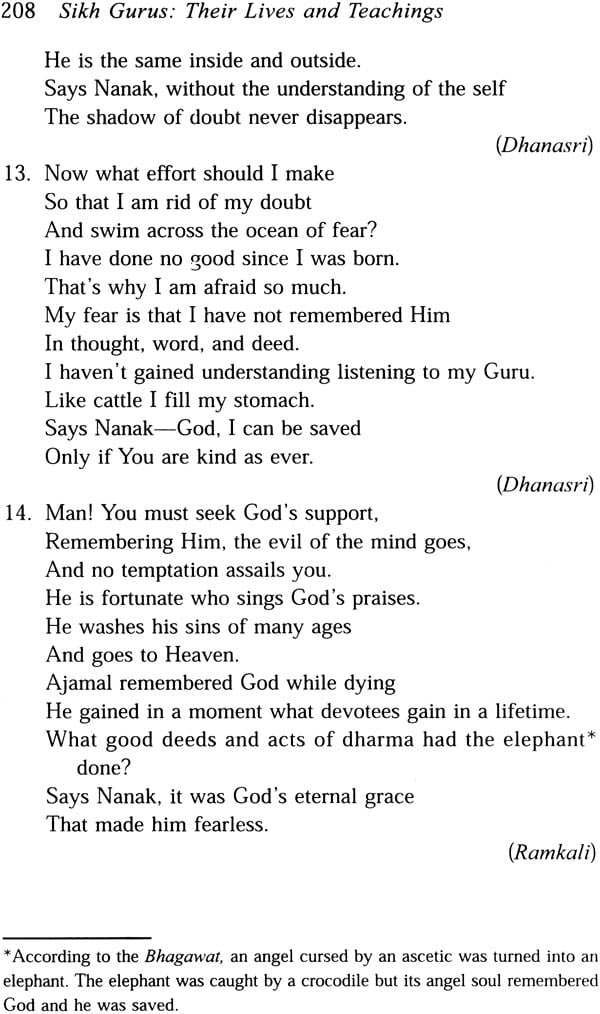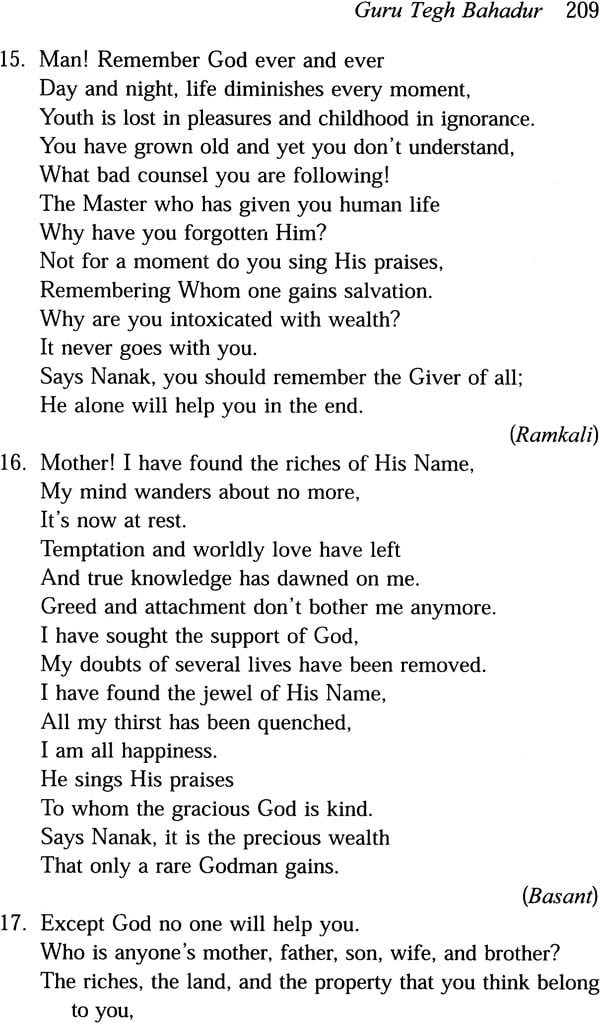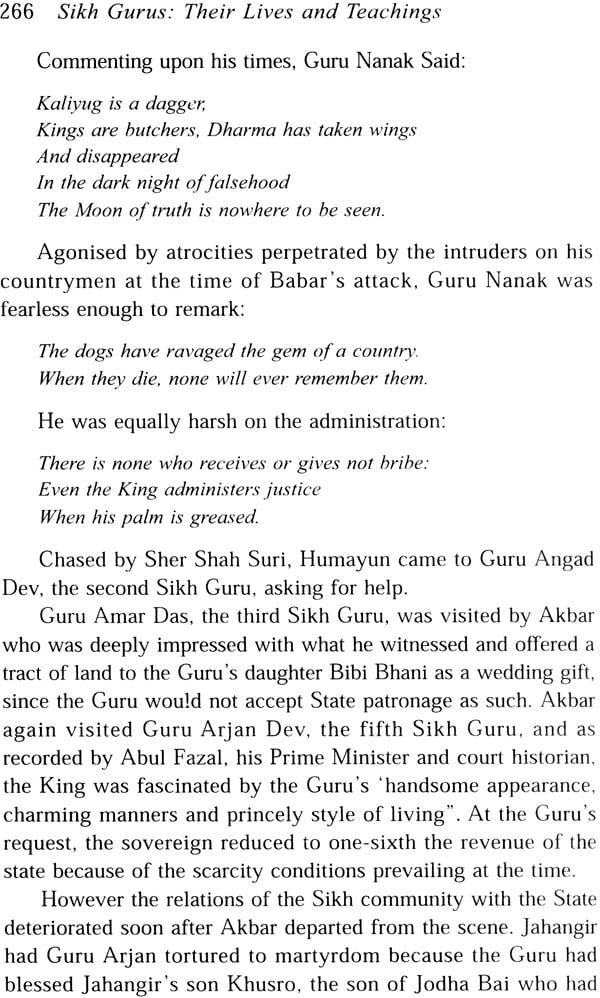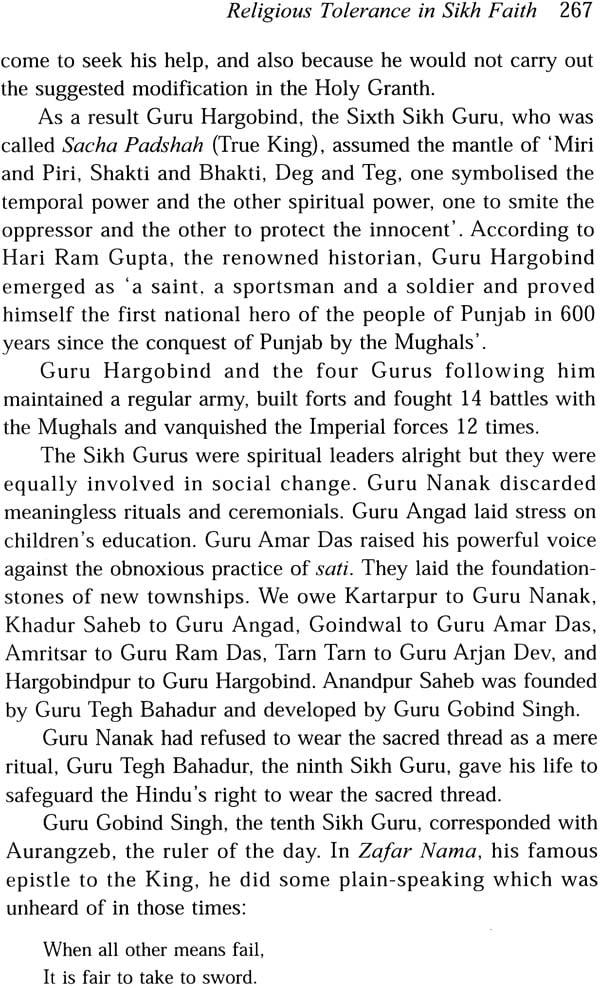
Sikh Gurus Their Lives and Teachings
Book Specification
| Item Code: | IDG402 |
| Author: | K S Duggal |
| Publisher: | UBS Publishers Distributors Pvt. Ltd. |
| Edition: | 2014 |
| ISBN: | 9788174766564 |
| Pages: | 265 |
| Cover: | Paperback |
| Other Details | 8.5" X 5.5" |
| Weight | 380 gm |
Book Description
About the Book:
The essence of the Sikh tradition-an emphasis on love, service to humanity, and devotion-is beautifully conveyed in this description of the Sikh Gurus and their teachings.
While the stories of their lives are told in a simple, straight-forward fashion the author conveys the courage, determination, love, and devotion that their lives represent, and inspires the reader to cultivate these qualities in the pursuit of his or her own spiritual path. The Sikh gurus embody the ideal of a spiritual life lived in the world, yet above the world-dealing successfully with the events of daily life, while maintaining the awareness of that one, underlying Reality that is the source of all love.
In this volume, apart from telling the fascinating life-stories of the Sikh gurus, the author has translated afresh selections from their popular hymns. He starts from the birth of Guru Nanak and closes with an account of the compilation of the HOLY GRANTH and its consecration, "the manifest corpus of all the Sikh gurus".
This book meets the need of both the Sikhs and the non-Sikhs, Indians and those living abroad, and most particularly, of those who have missed the opportunity to acquaint themselves with the Sikh tradition through writings in Punjabi in the Gurmukhi script.
Preface:
I belong to a devout Sikh family. My father was deeply religious, having been influenced by the Singh Sabha Lehr, a revivalist Sikh movements in the early part of this century. My uncle used to be an Akali to the core, an ardent admirer of Master Tara Singh, in spite of the fact that he was in Government service. No wonder that he was sacked and put on the blacklist by the white man during the Akali movement. I was brought up in the strict discipline of an orthodox family. Even as a child, I went to the Gurdwara both in the morning and in the evening, said my prayers regularly, wrote poems in praise of the Sikh Gurus, and won prizes on festival occasions.
And yet I was different. I made friends with Muslim boys. I had my midday meal with a Bengali classmate who lived close to our school. For my higher education, i went to Christian mission colleges where attending the Bible class was compulsory.
I read Urdu and Persian and after completing my studies, when I was looking for a job, it was my writings in Urdu and not in Punjabi that fetched me a fairly coveted post.
I was, therefore, not at all surprised that when the time for my marriage came, I chose a Muslim girl. She was so sweet that, more than I, my people were charmed by her.
We have already lived a little over five decades of a blissful married life. We have two children. The son is a doctor; he is married and lives with us. The daughter has also married a doctor who works in the U.S.A. They live in Florida.
In this perfect picture of happiness, of late I had started feeling that something was, perhaps, missing somewhere. I discovered that I had no occasion to introduce my children to the Sikh tradition and the Sikh way of life as such. Educated in public schools outside the Punjab, they didn't have an opportunity even to learn to speak Punjabi, much less acquaint themselves with the Gurmukhi alphabet letters in which the Sikh scriptures are written.
With this book I do my duty as a father. As I said, my son is a medical graduate and my daughter did her Honours in English literature. I have tried to tell the life and teachings of the Sikh Gurus in their idiom, an account that must not only be convincing but also be acceptable to the modern mind.
The Sikh Gurus were plain people. Excepting Guru Harkrishan, who died very young, all others were married and lived utterly simple lives, exhorting their followers to earn an honest living and share it with others. They had their children, who did not necessarily succeed them. They never made tall promises to gain for their followers heaven or houries (beautiful celestial maidens) or rivers of milk and honey. According to them, all men are born equal; they gave no quarter to distinctions of caste or creed. They started practices like community eating, community singing, and congregational prayers, rejecting rituals and ceremony. A little over five hundred years old, Sikhism is the newest amongst the major religions of the world. At times it appears as if the great Gurus culled the best from all the religions and presented a synthesis that promised to meet the needs of the new society.
Says the Sikh scripture, "My God is like what I see in the mirror," Man is made in the image of God. This is the greatest hope held out by the Sikh Gurus. You need not fast, you need not go on pilgrimage to holy places. You need do nothings except have faith in Him and remember Him day and night. This will lead you to the Guru. And the Guru's grace will get you peace of mind here and freedom from life and death hereafter.
And the Guru, according to the Sikh faith, is the Holy Granth -the living Guru. The Sikh scripture is a unique work among those the worlds has known. It contains hymns of the Sikh Gurus along with the work of a large number of like-minded saints, both Hindus and Muslims, high caste and low caste, princes and plebeians, of their time.
In this book, apart from telling the fascinating life-story of the Sikh Gurus, I have translated afresh selections from their popular hymns. The book opens with a chapter on the time when Guru Nanak was born closes with an account of the compilation of the Holy Granth and its consecration, "the manifest corpus of all the Sikh Gurus," I have spared no effort as a devoted Sikh and lifelong story writer to portray the lives of the Sikh Gurus as faithfully as possible and present their teachings in as simple a manner as I could.
I believe that every generation must reinterpret its preceptors and translate their sayings into its own idiom. This book attempts to meet this need both for the Sikhs and the non-Sikhs, Indians and those living abroad, and most particularly, for those who have missed the opportunity to acquaint themselves with the Sikh tradition through writings in Punjabi in the Gurmukhi script.
Before placing the script with my original publishers I had it read by the late Sardar Ranbir Singh, the celebrated author of The Divine Masters and The Sikh Way of Life and also Mr. P. R. Kaikini, formerly Editor, National Book Trust, India. They made valuable suggestions, most of which I have gratefully accepted; where I have differed, I take the entire responsibility for it. I am also deeply indebted to my friend, Mr. Keshav Malik, for his valuable suggestions in the translation of the Gurbani.
K. S. Duggal
| Preface | v | |
| 1 | The Times | 1 |
| 2 | Guru Nanak | 8 |
| 3 | Guru Angad | 61 |
| 4 | Guru Amar Das | 82 |
| 5 | Guru Ram Das | 101 |
| 6 | Guru Arjan | 121 |
| 7 | Guru Hargobind | 156 |
| 8 | Guru Har Rai | 183 |
| 9 | Guru Harkrishan | 190 |
| 10 | Guru Tegh Bahadur | 194 |
| 11 | Guru Gobind Singh | 212 |
| 12 | Guru Granth Saheb | 249 |
| 13 | Religious Tolerance in Sikh Faith | 259 |
| Glossary | 271 | |
| Bibliography | 275 | |
| Index | 281 |
